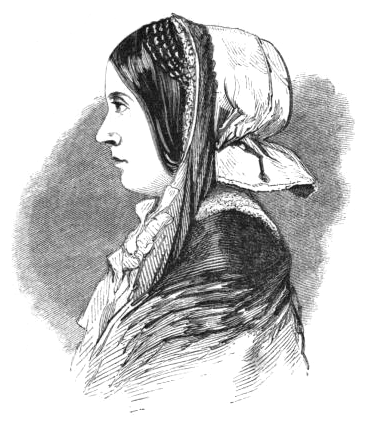Our Legal Heritage: ‘Not proven’ Madeleine Smith case under the microscope

Madeleine Smith
A dead lover, traces of poison and series of letters that led to a middle-class woman on the stand – the case of Madeleine Smith held all the characteristics of a scandal to rock Victorian Scotland.
True crime enthusiasts are in for a treat as the University of Dundee’s Leverhulme Research Centre for Forensic Science (LRCFS) will explore the infamous murder trial of Madeleine Smith in the latest of the series of the Inside Forensic Science podcast.
The 19th-century Glasgow socialite was accused of poisoning and subsequently murdering her secret French lover, with the case gaining the attention of audiences worldwide.
The trial in the High Court in Edinburgh caused even more controversy when the accused was cleared on a ‘not proven’ verdict, a verdict which is still widely used in Scotland, despite recent proposals to see it scrapped.
Researchers at LRCFS have delved into the sensational case and Inside Forensic Science will explore the evidence presented in the trial, including Madeleine’s love letters, the autopsy and forensic toxicology.
Over the course of six episodes, narrated by Pennie Stuart, leading forensic scientists, pathologists and lawyers will examine the historical investigation, looking at how the evidence was handled and how they would tackle it today. The final episode will pull all the pieces together and question the not proven verdict.
LRCFS director Professor Niamh Nic Daeid said: “This podcast allows us to explore the changes in how science has been applied in the criminal justice system. The late 1800s and early 1900s saw some large advancements in science – we compare what was found then with what a forensic scientist would look at in a case today.
“Our research centre is tackling current and future challenges in forensic science, but some methods haven’t changed all that much in the last 100 years. The podcast gives us a chance to explore what the scientific evidence can mean in the context of a full case. This case is particularly interesting as it involved a woman accused of murder by poisoning and so we also explore the challenges for women in society at that time.”
Pierre Emile L’Angelier was found deceased in his Glasgow accommodation by his landlady in 1857 and a post-mortem examination revealed traces of arsenic in his body, which was then concluded to be the cause of his death.
After the arrest of Madeleine, jurors and the public learned how the pair had been involved in a secret affair for two years. Alongside the post-mortem findings, explicit love letters written by Madeleine to Pierre were used as evidence throughout the trial, which revealed that Pierre was threatening to expose the relationship.
Despite prosecutors presenting what they believed was clear motive for committing the crime, 15 male jurors rested on a not-proven verdict. The verdict meant that Madeleine, who was 22 at the time of the trial, was acquitted and was able to go on to create a new life for herself with no consequences, causing great controversy amongst her Victorian peers.
Scotland’s ‘not proven’ verdict has been a topic of debate for many years. A recent consultation which gathered views from the public, legal professionals and those with experience of the justice system favoured scrapping the verdict completely, and plans are underway to discard it from Scottish courts.
Inside Forensic Science will look at what not-proven means for a jury and for those who receive the judgement, and question if there was sufficient evidence for the verdict in the trial of Madeleine Smith.







